10 Email Sequences That Work + How to Create Them
Casey O'Connor
Email sequences are powerful tools for sales and marketing teams.
With some email marketing generating an ROI as high as 3800%, and automation improving revenue generation by 320%, any business that wants to grow, scale, and outsell their competition needs to have a strategy around automating their email outreach.
The real question, though, is how to design and optimize an email sequence that works consistently and predictably.
In this article, we’ll go over everything you need to know about email sequences, including what they are, how to design one, and several examples of their best use cases.
Here’s what we’ll cover:
- What Is an Email Sequence?
- Email Sequence vs. Email Drip Campaign
- Email Sequence Examples
- How to Create Email Sequences
- How Many Emails Should Be in a Sequence?
- Measuring Email Sequences Performance
- Tips to Create a Winning Email Sequence
- Email Sequence Template
What Is an Email Sequence?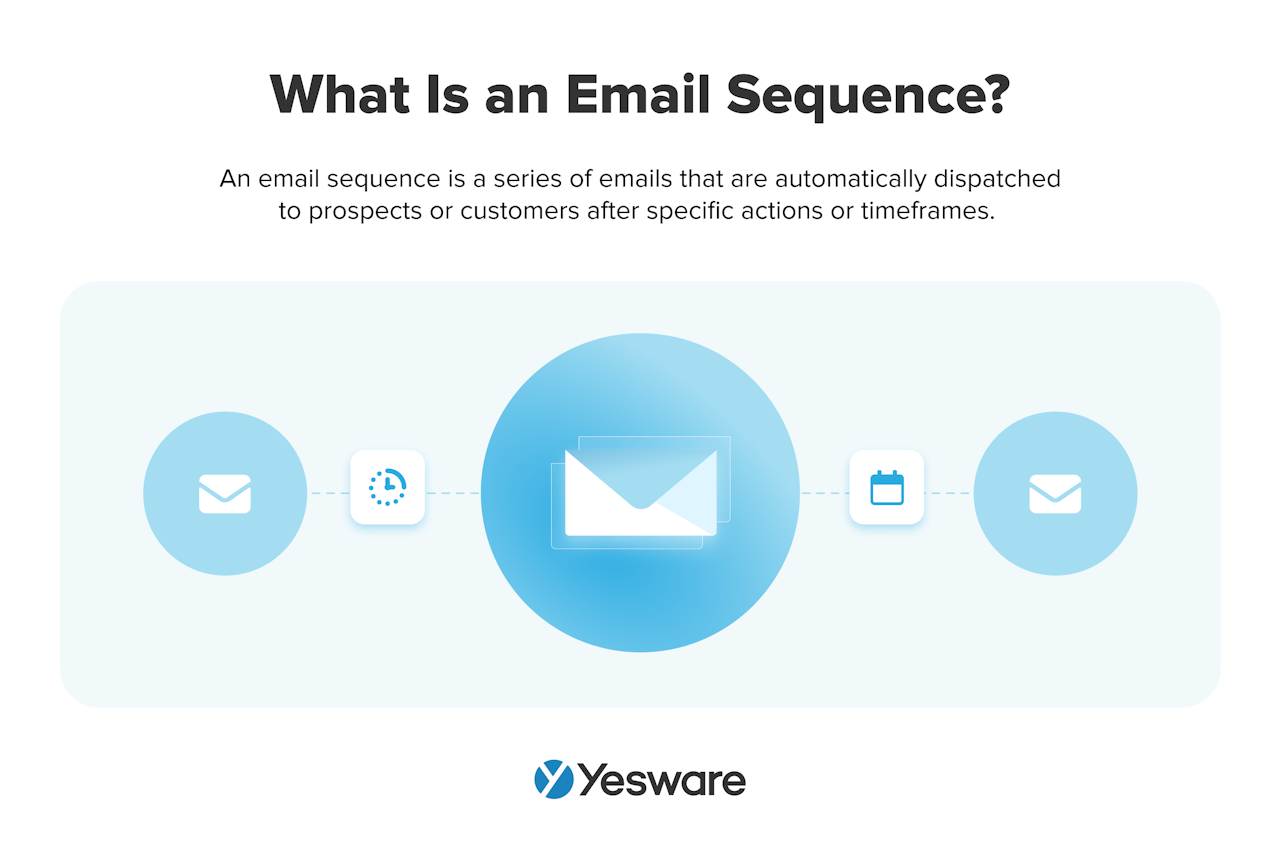
An email sequence is a series of emails that are automatically dispatched to prospects or customers after specific actions or timeframes. These pre-defined factors are known as triggers.
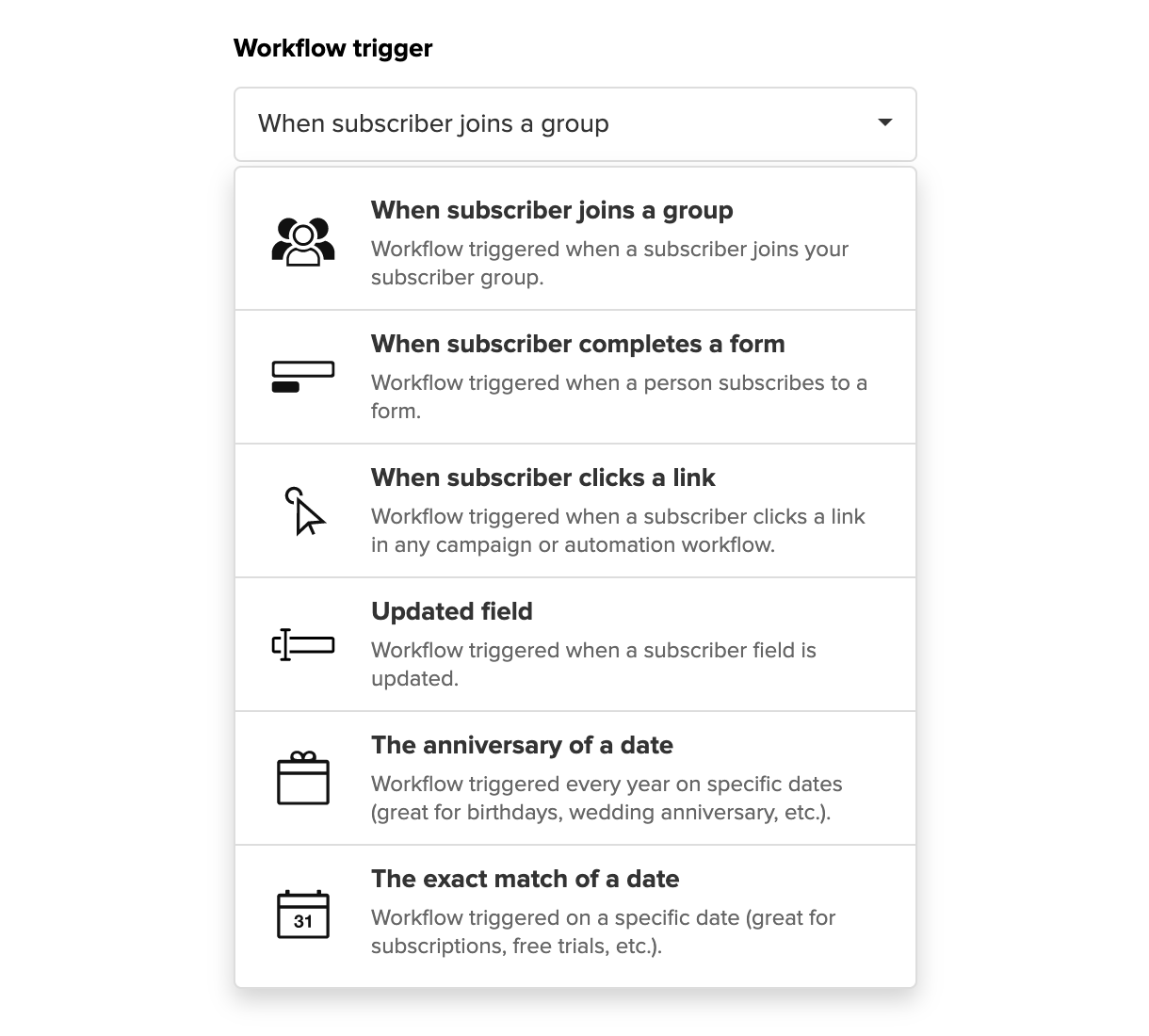
Email sequences can take many different forms. Each one serves a different purpose and reaches a different subset of your prospect or customer list.
The number of emails in the sequence, their content, and the timing of delivery will all vary based on what you hope to achieve with the sequence.
Regardless of the form they take, email sequences are incredibly powerful tools that can transform your sales process.
Email sequences are an easy-to-scale method for distributing personalized and highly valuable content to virtually limitless recipients. They’re also extremely affordable to implement and optimize.
Email Sequence vs. Email Drip Campaign
Email sequences and email drip campaigns are terms often used interchangeably, but there are actually subtle differences between the two concepts.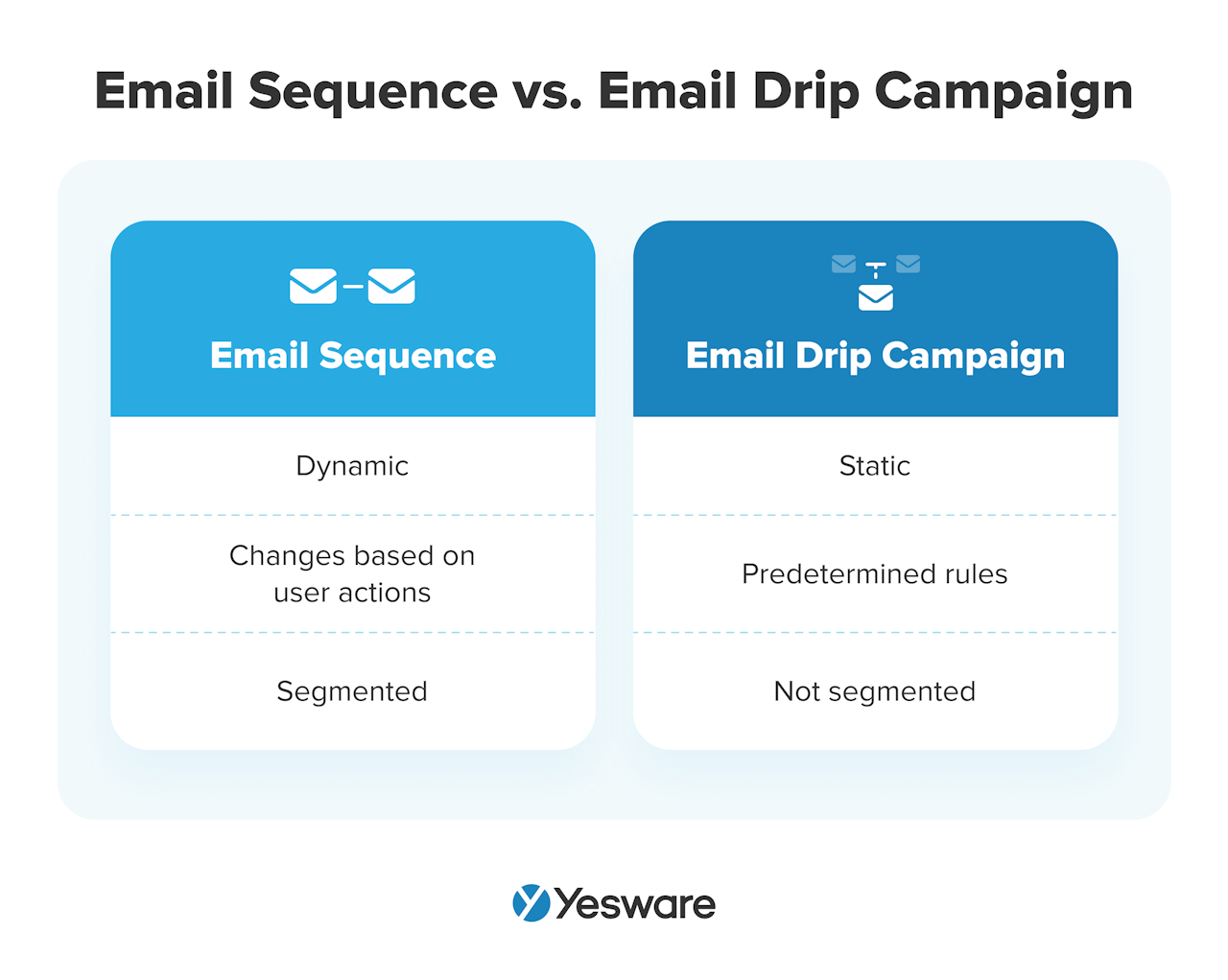 Email drip campaigns are static. That means they’re exactly the same every time. They are unchanging. The email content, the order in which they’re delivered, and the timing/cadence at which they’re sent remain the same regardless of the prospect or their interaction with the emails.
Email drip campaigns are static. That means they’re exactly the same every time. They are unchanging. The email content, the order in which they’re delivered, and the timing/cadence at which they’re sent remain the same regardless of the prospect or their interaction with the emails.
Well-known examples of email drip sequences include Black Friday sale announcements or sequences that help prospects gear up for a webinar.
Email sequences, on the other hand, are dynamic. The sequence may change based on how a prospect responds to a given email in the sequence.
In other words, the next email in an email sequence is a direct response to how they reacted to the email prior.
Email drip sequences are easier to create and maintain than automation email sequences. Drip campaigns have rules that only need to be created once; they are a “set it and forget it” kind of campaign.
Automation email sequences can be trickier. Your audience needs to be carefully segmented, and you may need to make several rule changes over the course of the campaign to ensure everyone gets the content best suited for them based on their prior decision-making.
Email Sequence Examples
One of the best things about email sequences is that there’s essentially no limit to the ways you can use them in your sales process.
Here’s an example of an email sequence with several subpaths that help reach the ultimate goal:
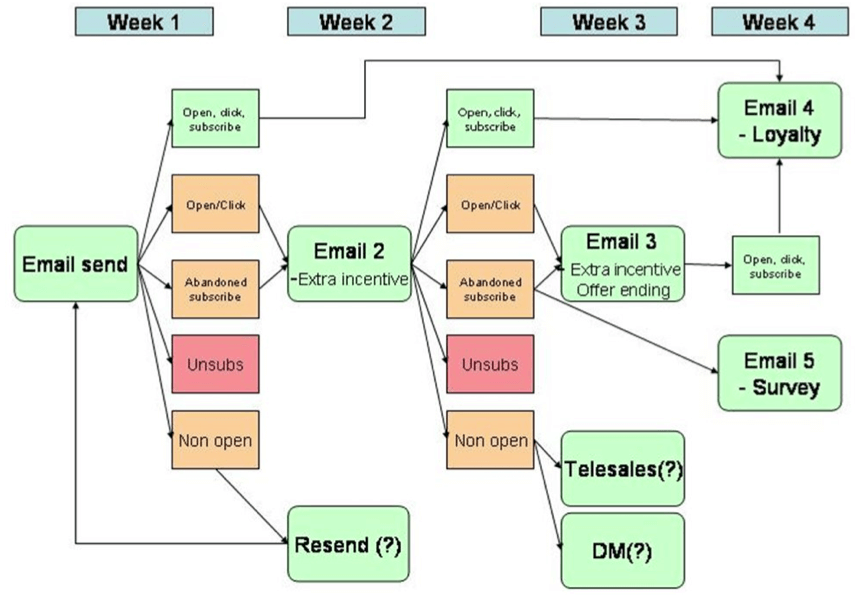
Not all are that complex; some are more so.
Marketing and sales teams should collaborate to determine which groups of prospects and customers are worth targeting, and to what content and cadence they’re most likely to respond.
Here are some of the scenarios for which email sequences are highly effective.
Lead Nurturing Email Sequence
A lead-nurturing email sequence is designed to introduce new leads to your business in a way that builds rapport and trust.
These leads are highly interested in your brand. In most cases, the lead nurture sequence is triggered by a lead providing their email address in exchange for highly valuable content called a lead magnet.
Here’s a good example of a carefully-designed lead nurturing sequence:
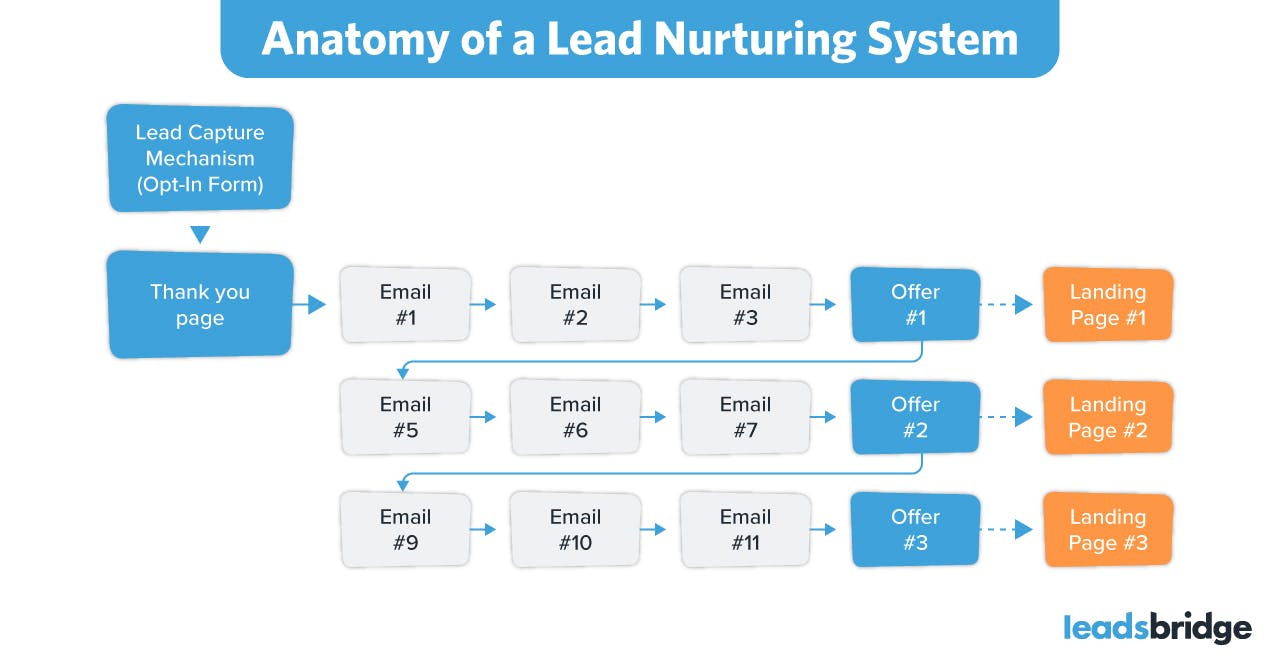
For the most part, despite their interest, these are not sales-ready leads — yet. That’s where the lead nurturing email sequence comes in. It’s designed to help these leads feel more prepared to engage in the remainder of the sales funnel.
The lead-nurture email sequence usually contains your most compelling content. Many users find that 6 – 8 emails work best for this sequence, but marketing and sales should collaborate to determine the optimal length for your specific buyer.
The goals of a lead-nurturing email sequence are to:
- Introduce your brand in a way that gains trust and credibility
- Teach leads what they need to know to get value from your lead magnet and related content
- Convince the reader to follow through on strategic CTAs that move them to the next stage of the sequence or sales funnel
Don’t fall into the trap of thinking the lead nurture sequence is less important than those designed for SQL. Salesforce reports that leads require 6 – 8 touches before they become viable, so this sequence serves a very specific and important purpose.
As far as timing is concerned, the lead nurture emails should be dispatched frequently enough that your brand is top of mind for the lead, but spaced out enough that they don’t annoy the lead or trigger a spam filter.
Engagement Email Sequence
Similar to a lead nurture sequence, an engagement email sequence is also used to build rapport and generate new or sustained interest with prospects and customers.
They’re also important for helping salespeople identify and track the level of engagement of each recipient. Email automation software often provides email tracking and analytics reports that detail which recipients opened, read, replied to, and/or clicked on links or attachments in an engagement sequence.
The content in engagement email sequences should be extremely compelling and ideally will create some urgency or fear of missing out if the reader doesn’t follow the CTA.
It’s important that your email automation software has the ability to track which recipients successfully convert to the next stage of the sales funnel. Ideally, the software should also be able to remove those prospects from the recipient list and into an email sequence more suited for readier leads.
Even engaged prospects will become annoyed by continuing to receive emails that no longer serve their stage of the buyer’s journey.
Re-Engagement Email Sequence
Email marketing automation has given salespeople the opportunity to recapture out-of-touch but otherwise good-fit leads. Before the rise of digital marketing, many of these types of leads were lost because salespeople simply could not afford to dedicate valuable time to chase them down.
A re-engagement email sequence can be automatically triggered after a certain amount of time goes by with no activity. It may also be triggered by a user adding products to their cart, but then abandoning it. You might also deploy an education-based re-engagement sequence for customers who use their product infrequently.
A re-engagement sequence should prompt the recipient to open the email and take some kind of action.
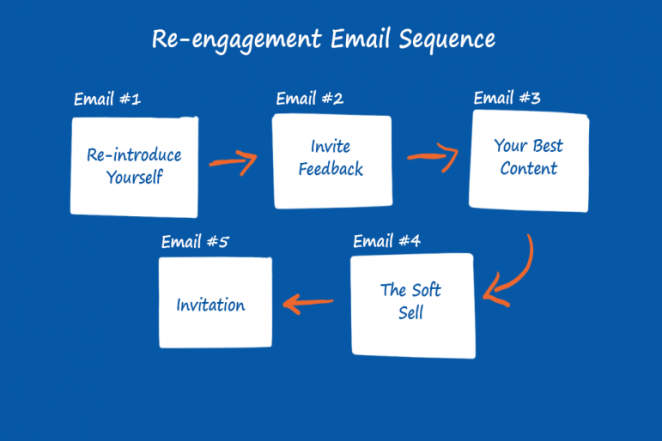
In many cases, unsubscribing a user via a re-engagement sequence is considered as successful as re-engaging one. A clean and up-to-date CRM database is more valuable to a sales organization than one that’s overflowing with out-of-date or poor-fit leads.
Conversion Email Sequence
A conversion email sequence has a name that’s somewhat misleading — the goal of many email sequences is to convert the reader to the next stage. So what’s different about a “conversion” email?
Conversion email sequences do have their own unique use case. These sequences are used when you have a single, highly specific call-to-action that you want your readers to follow.
In other words, a conversion email is reserved for instances when you’re directly asking for something from your prospect, like signing up for a webinar. These requests work best when the email offers something in exchange for the reader following through with it, like a one-week free trial for anyone who signs up.
Successful conversion email sequences can transform an otherwise low-enthusiasm lead on your email list to a well-qualified and eager one.
Follow-Up Email Sequence
The follow-up email sequence is pretty straightforward — some might even call it simple.
Follow-ups don’t generally require complex strategy or top-performing content. Take a look at this sequence example:
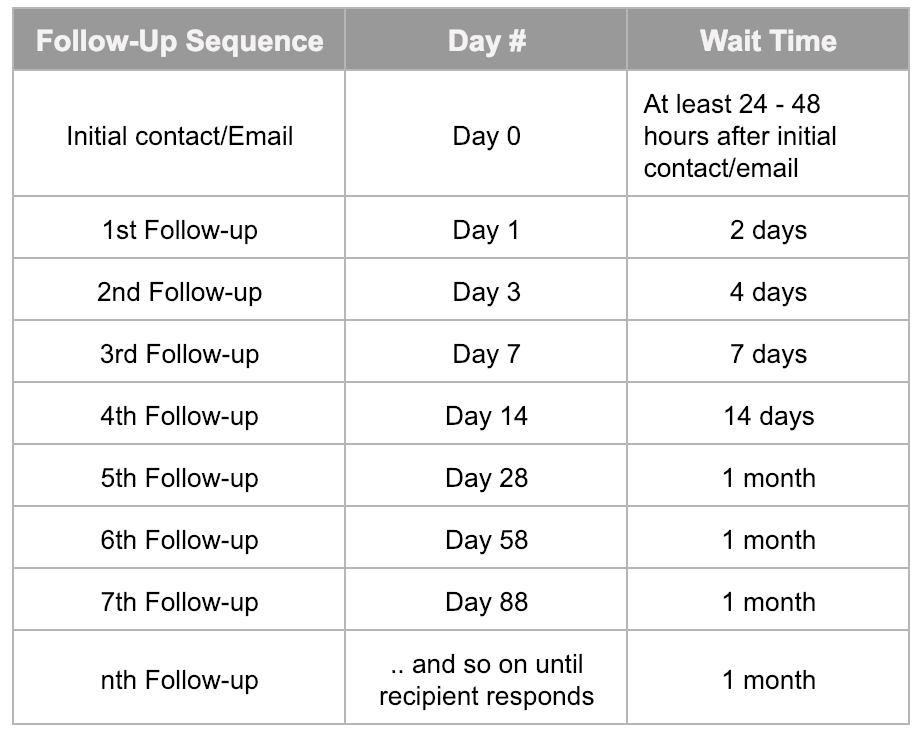
That being said, the importance of the follow-up sequence cannot be overstated.
Sales research shows that many leads require five follow-ups before they respond. Still, most salespeople give up after the first attempt. The number of leads that are lost due to failure to follow up is mind-blowing — especially when you consider how easy it can be to automate the process. 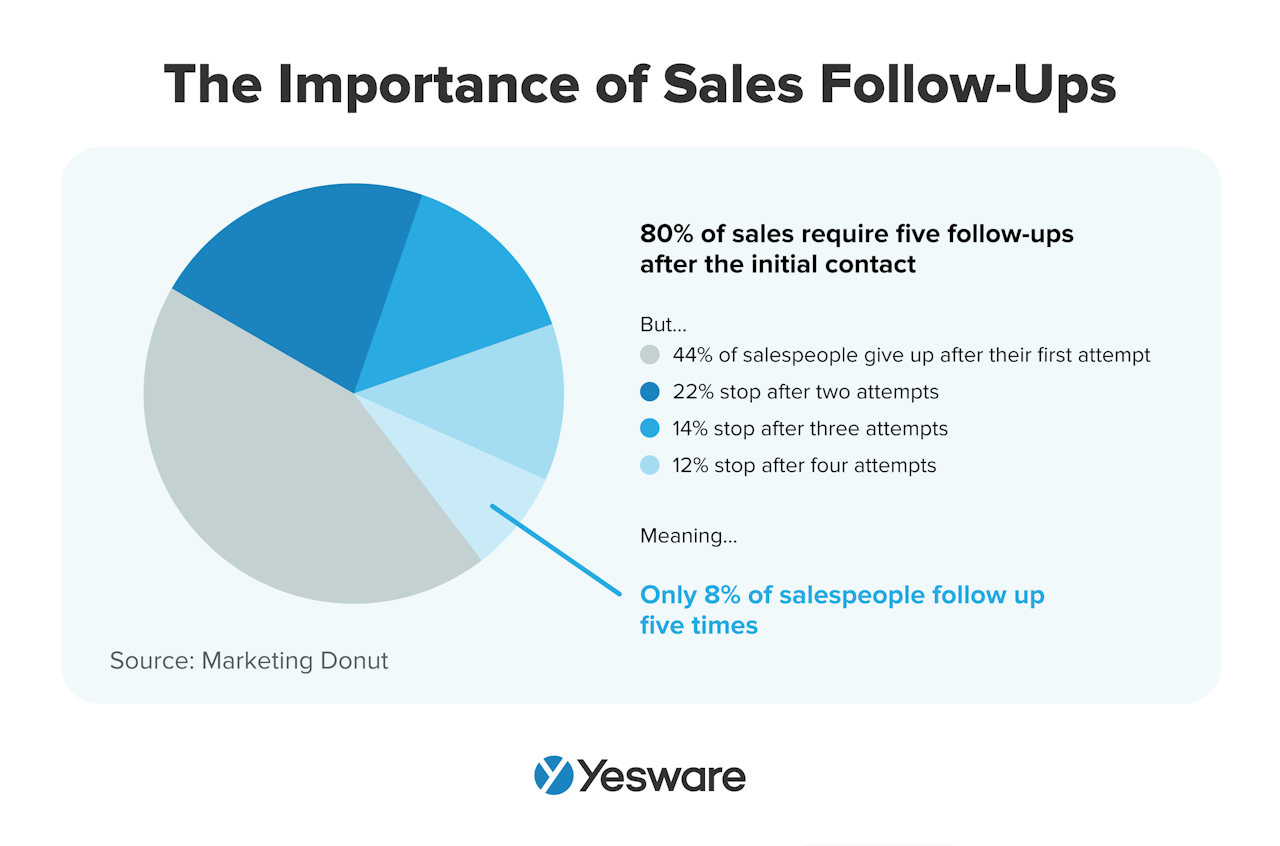 If you’re just getting started with email sequences and you don’t know where to start — the follow-up is your answer. This sequence alone will save sales reps countless hours.
If you’re just getting started with email sequences and you don’t know where to start — the follow-up is your answer. This sequence alone will save sales reps countless hours.
Reminder Email Sequence
The reminder email sequence is similarly straightforward and similarly impactful. It’s a low-pressure way to keep in touch with your prospect and ensure that they stay engaged in the funnel.
Fortunately, customers have predictable buying patterns. A well-developed buyer persona makes the process even more predictable. 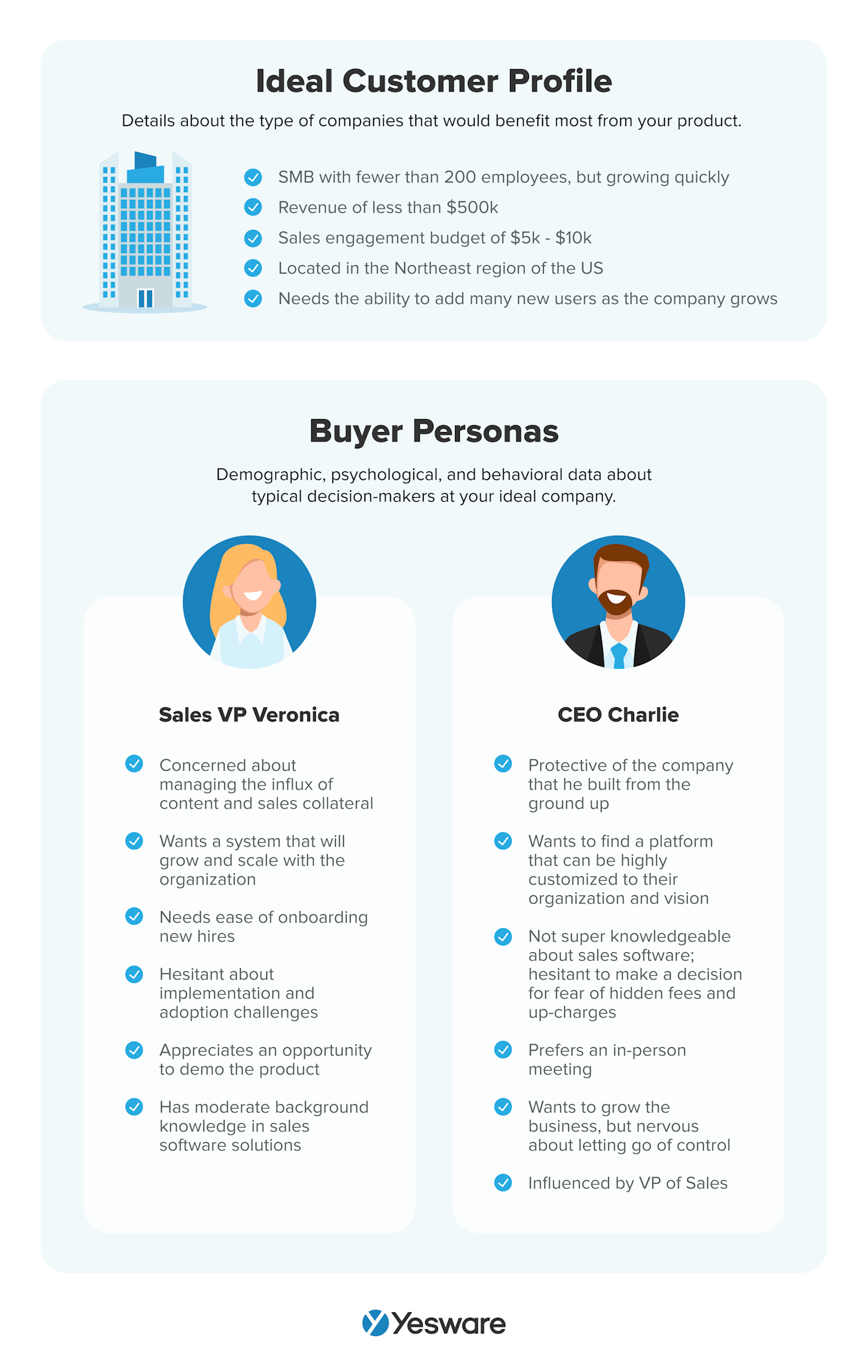 Any salesperson that can reasonably predict a prospect’s behavior can design a reminder email sequence around that behavior. Emails should be designed around specific behavior triggers at strategic stages of the sales funnel.
Any salesperson that can reasonably predict a prospect’s behavior can design a reminder email sequence around that behavior. Emails should be designed around specific behavior triggers at strategic stages of the sales funnel.
Onboarding Email Sequence
The onboarding email sequence is also relatively self-explanatory. It falls under the umbrella of “training,” but it serves a very specific purpose.
The onboarding sequence exists to help new customers become aware of everything they need to know in order to successfully use your product.
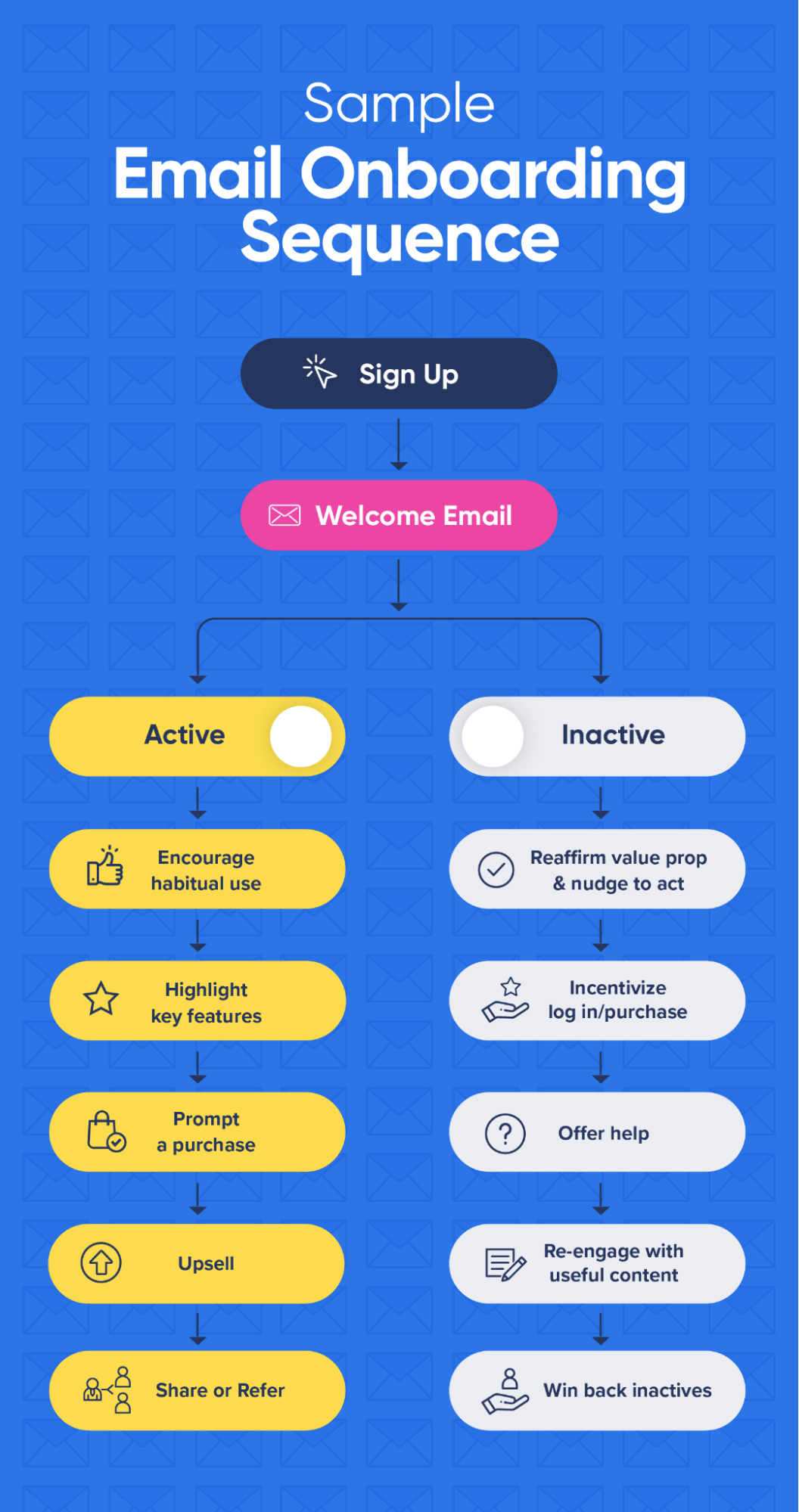
Customer success is as important to a sales organization as the sales funnel itself — do not treat the onboarding sequence as an afterthought. It should be thorough, valuable, and personalized, not only for the sake of your brand image, but also to increase the chances that new customers will buy a cross-sell or upsell.
Training Email Sequence
A training email sequence is designed to teach you prospects or customers how to do something that will help them get more value from your product.
It’s clear how these benefit the prospect, but training emails also provide a huge payoff for salespeople. They eliminate the need for prospects and customers to reach out to you with single questions that could easily be answered en masse with the help of automation.
Upsell Email Sequence
An upsell email sequence helps salespeople sell to their best and easiest-to-sell-to customers. Many salespeople report having great success in pitching an upsell to existing clients.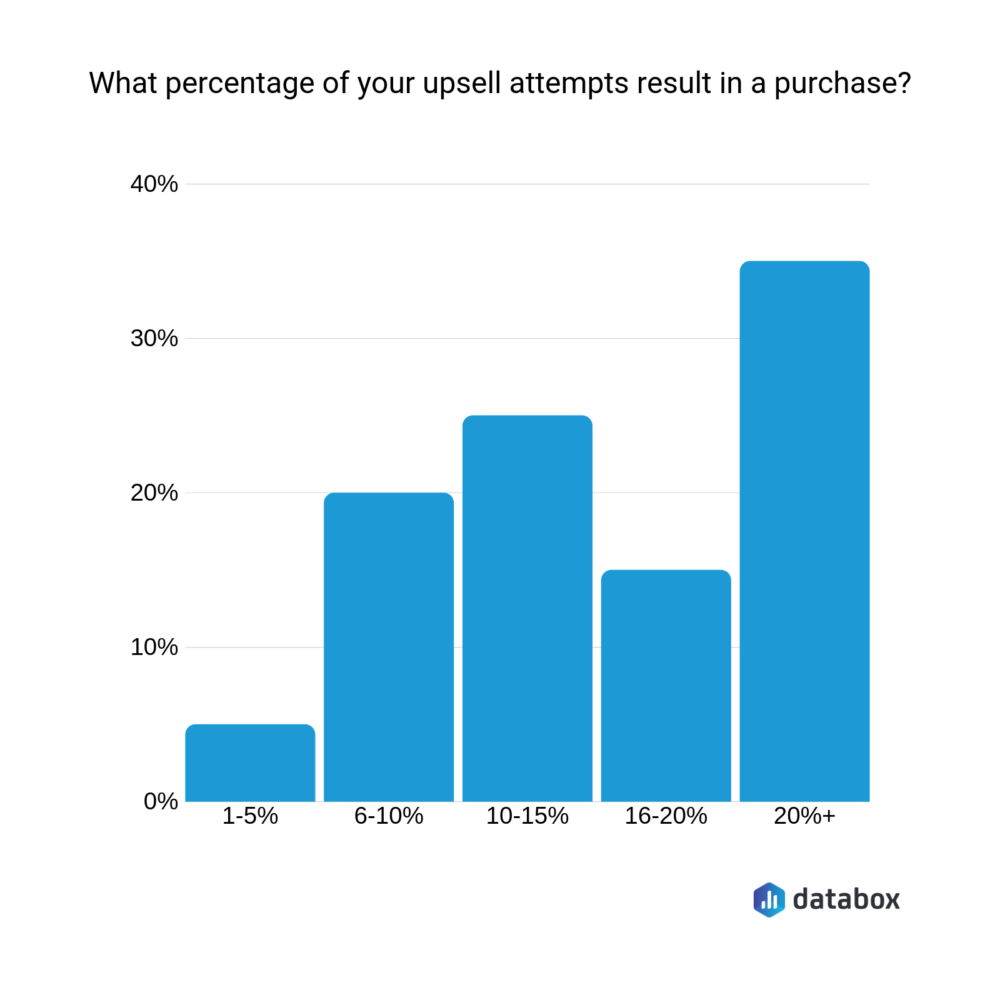 Automating the upsell saves time and other sales resources that could be better spent persuading prospects who have not purchased yet.
Automating the upsell saves time and other sales resources that could be better spent persuading prospects who have not purchased yet.
Renewal Email Sequence
A renewal email sequence reminds customers that their contracts will soon expire, and encourages them to renew their partnership with your company. These can take a variety of designs depending on the typical behavior of your buyer.
Tip: Grab outreach best practices and proven email templates below.
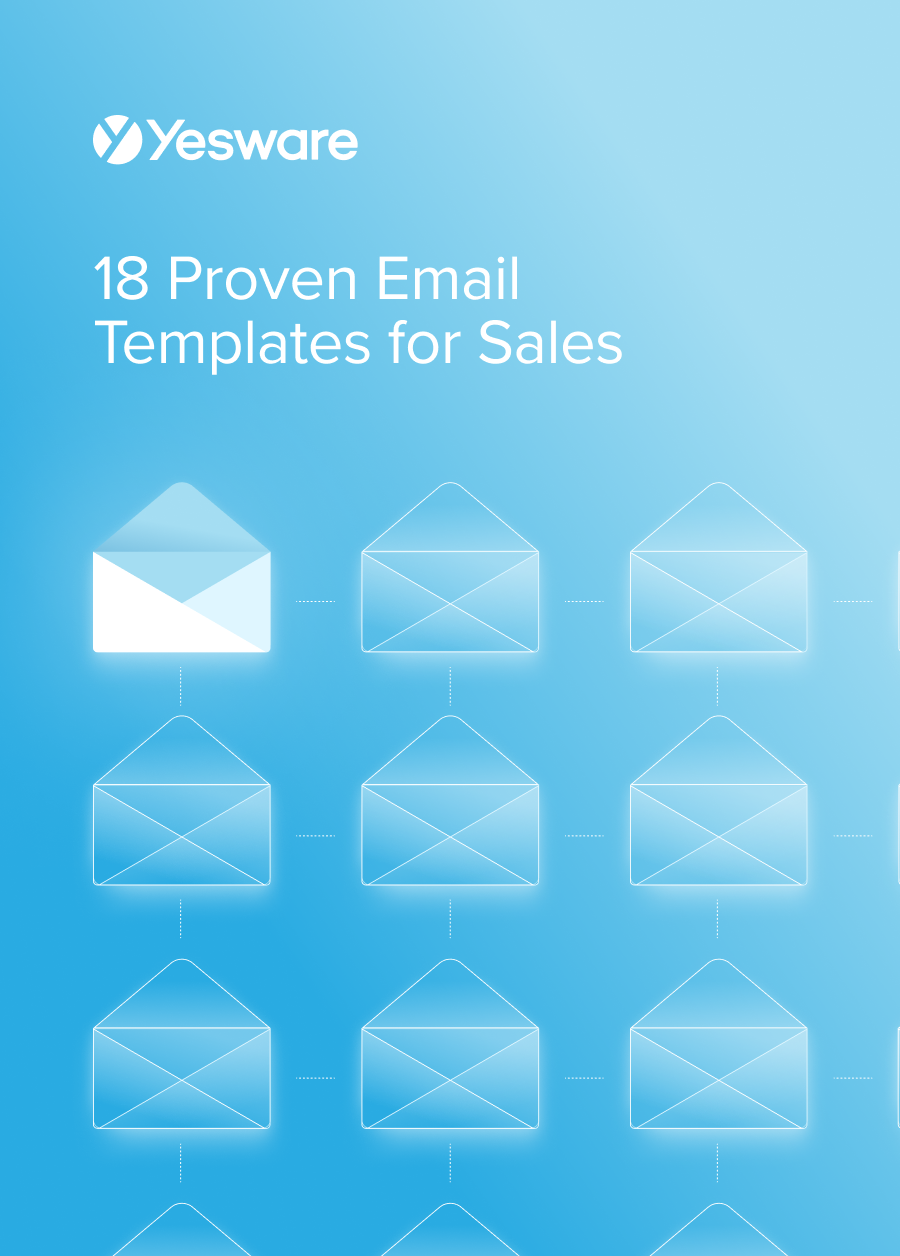 18 Proven Email Templates for SalesWinning email templates for cold outreach, follow-ups, and nurturing relationships – backed by data and real-world examples.
18 Proven Email Templates for SalesWinning email templates for cold outreach, follow-ups, and nurturing relationships – backed by data and real-world examples.
How to Create Email Sequences
Automated email sequences can be transformative to your business, if they’re done the right way.
First and foremost, it’s critical that your sales and marketing teams have collaborated to create detailed buyer personas for anyone you might target with an email sequence. These personas will help dictate the goals, content, and cadence of each email and overall sequence.
The most important factor in designing any email sequence is having a thorough understanding of the many different needs a buyer has during each stage of the sales funnel.
Before you sit down to map out the actual messages, consider the following:
- What are my goals for this email sequence? What am I hoping the reader will do by the end of it?
- How many emails do I need to cover all of the pieces of this particular strategy?
- What information do I need to convey, and which of our content is best suited for that purpose?
- How can we improve on the outreach we’ve already deployed?
It’s also important to keep in mind that these are called “sequences” for a reason — don’t try to do everything in a single email. The purpose of each email in the sequence is to get them to become excited and eager to open the next one.
The following steps will help sellers and marketers design an email sequence for just about any purpose or audience.
1. Create the Goal of the Sequence
Email sequences are best created using a backward design process. Think about what action you ultimately want your readers to take; that will help you build a roadmap to get them there.
2. Pinpoint the Trigger
Once the goal of the sequence is clear, the next step is to consider how salespeople know when to add them to the sequence.
In other words, you need to identify the trigger or enrollment criteria that demonstrate they are ready to engage with the specific sequence. It could be a certain action, like downloading a lead magnet, or a certain amount of time passing.
3. Determine the Number of Emails in the Sequence
Consider how many emails are needed to share the relevant content and entice readers enough to reach the ultimate goal. Also, consider how much time should lapse overall, and between each email.
To the best of your ability, design the sequence with only enough emails to reach your goal. More is not always better when it comes to email sequences.
4. Write the Emails
Once the strategy and planning are complete, it’s time to dig into the content. Include rapport-building copy as well as sales collateral in each of your emails. It’s also important to draft and revise your emails several times before sending them out.
5. Set up the Automation
Use your email automation software to upload and schedule the sequence.
Let’s look at Yesware, for example.
In Yesware’s Campaigns feature — the first step is to drop a .CSV file or integrate Salesforce CRM to add recipients directly from Leads/Contact records or bulk import entire list views.
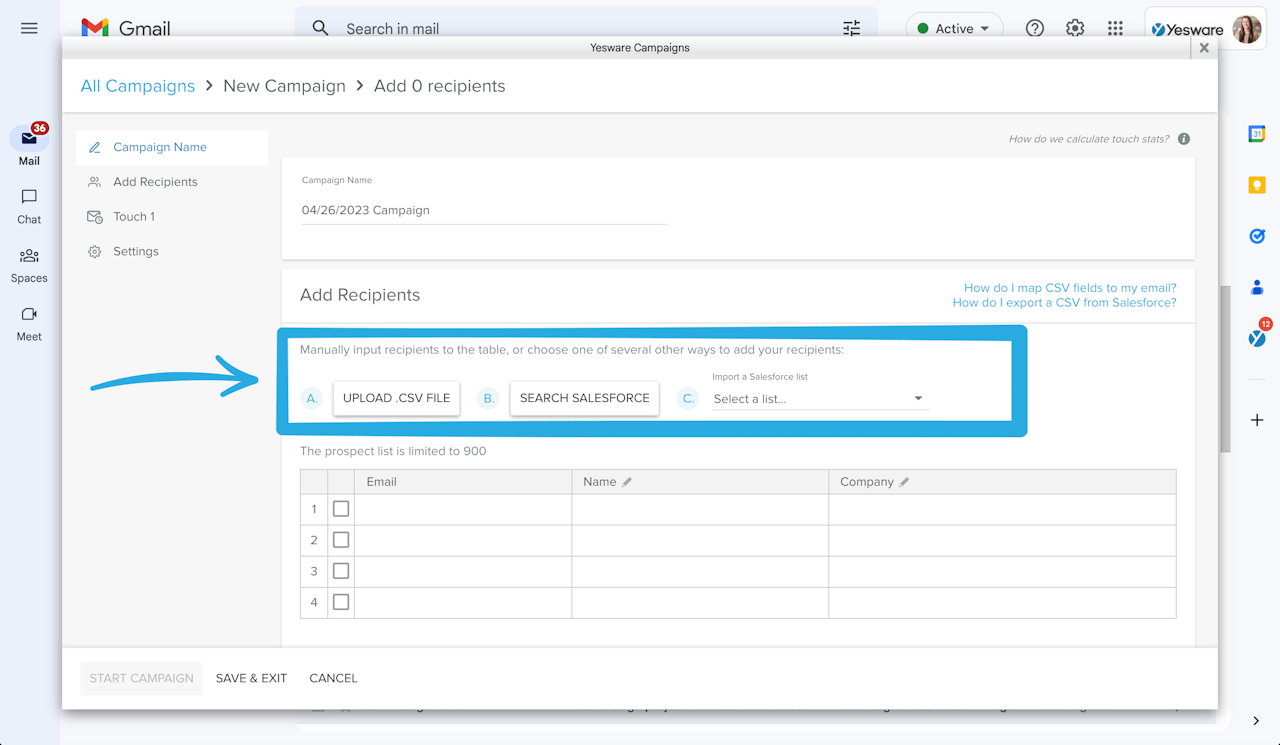
Next, pick your touch type such as automated email, manual email, phone call, custom task, and LinkedIn InMail.
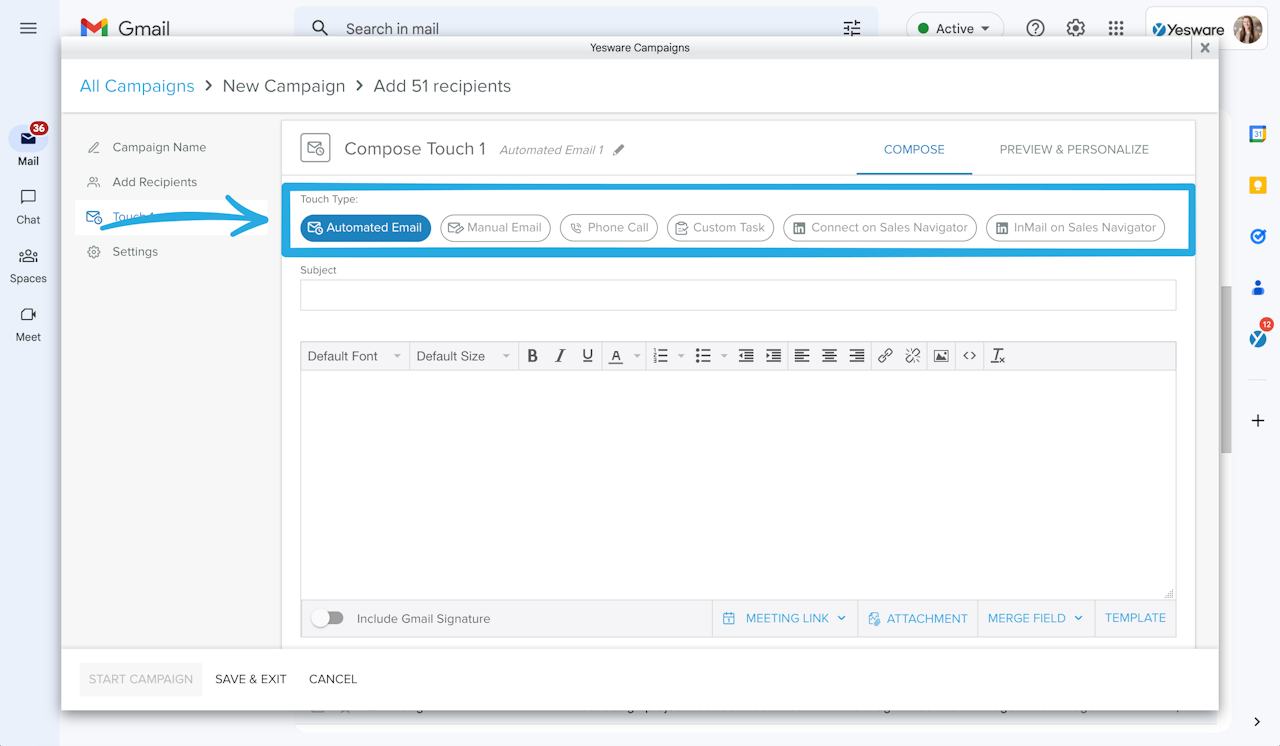
Then, write your email. You can import templates and customize emails automatically with dynamic fields or one at a time.
Once your first touch is done, you can continue to add more touches to your email sequence.
Automate the next touch to go out when prospects don’t respond and the tool will automatically remove recipients who reply or book a meeting.
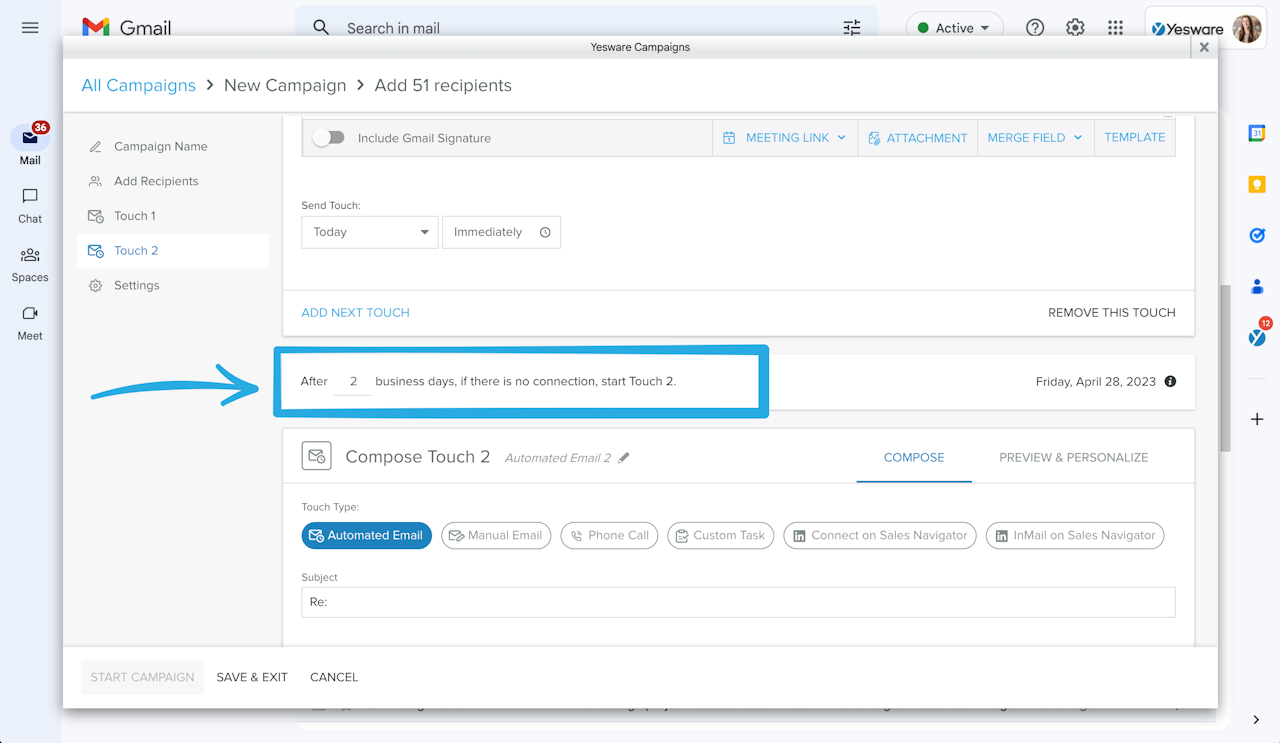
You can set custom times and cadences for each touch.
And that’s it! Add as many touches as you’d like, then click “Start Campaign.”
Automation helps make setting up email sequences a breeze.
Try Yesware Campaigns for free today.
6. Test the Sequence
No matter how eager you are to send your well-designed sequence, take the time to test it first. Send the sequence, exactly as a prospect would see it, to a few members of your team.
It’s worth it to do it on the same timeline, as well — emails read differently when they’re read back-to-back as opposed to spreading out over time.
You can follow this process for each email sequence and subgroup of your lead list.
How Many Emails Should Be in a Sequence?
One of the best things about automated email sequences is that sellers set the pace. They get to determine how many emails are needed to achieve their goals.
Each email sequence is unique and the number of emails in each one will vary. Some are as brief as a single message, while others include more than 10.
On average, most sequences contain 4 – 6 emails that are dispatched over 1 to 2 months.
For example, here’s what we found in a sales follow-up statistics study — based on our data the most successful email sequence (based on replies) was six touches in the span of roughly three weeks. 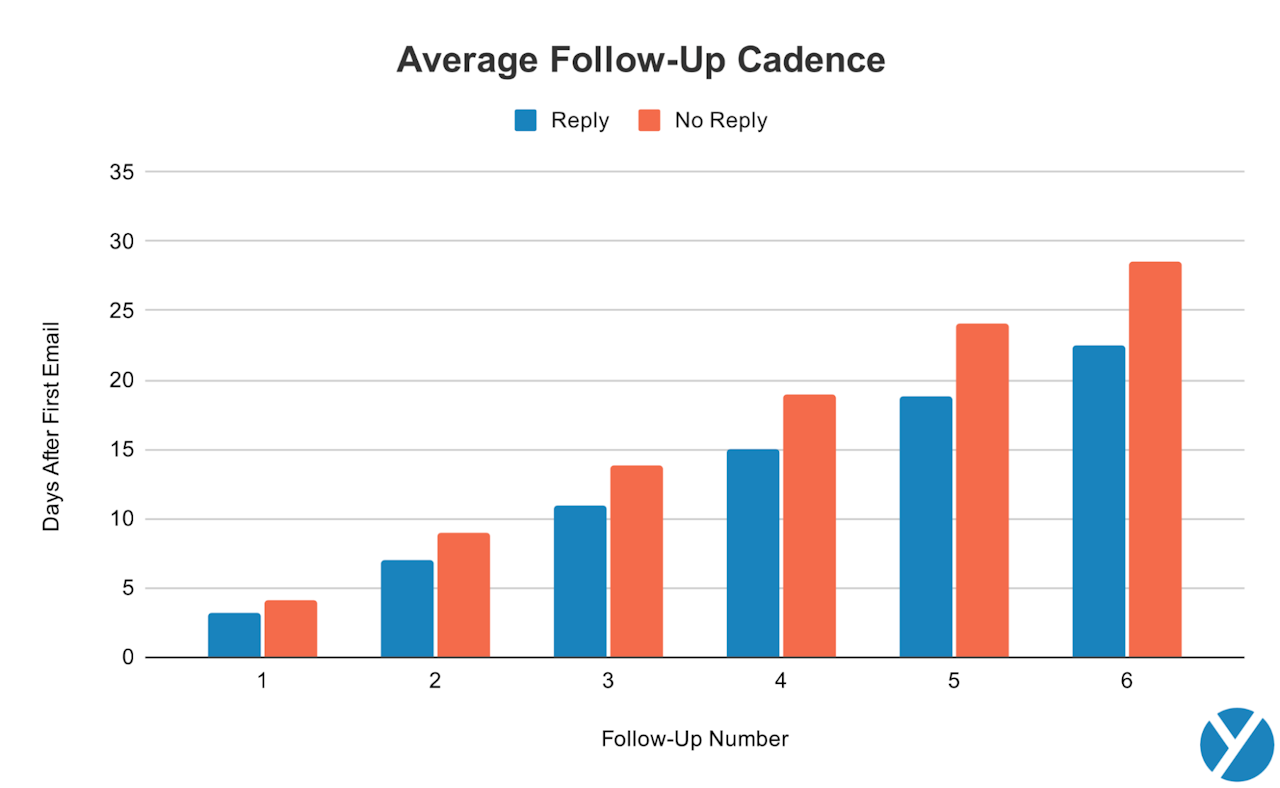 This is what the chart above tells you is the ideal email sequence:
This is what the chart above tells you is the ideal email sequence:
- Follow-up #1: 3 days
- Follow-up #2: 7 days
- Follow-up #3: 11 days
- Follow-up #4: 15 days
- Follow-up #5: 19 days
- Follow-up #6: 22 days
Again, though, it’s entirely circumstantial. The factors that matter most are:
- The buyer persona
- The buyer’s journey stage
- Average sales cycle length
- Goals of the sequence
It’s best practice to test each sequence over time. If you find that readers stop engaging after a certain time, it may mean that you need fewer emails or less time between each message.
Measuring Email Sequences Performance
It’s worth noting that the strength of the automated email sequence — the fact that many sequences can be sent in tandem, with very little seller involvement once the sequence is designed and scheduled — can also create problems for marketers and salespeople who don’t have access to the right tools to manage their email outreach.
Email sequences quickly become useless if the performance data isn’t being studied and optimized.
But with so many sequences running at once, each of them with several different variables, it can be an enormous challenge to monitor and analyze how effective they are.
Adding to that challenge is the way the buyer’s journey has transformed since the rise of digital media. Buyers today do much of their own research before they ever connect with a sales team — even via email. Salespeople cannot guarantee that all prospects in a subgroup get the same information at the same time.
That only heightens the importance of carefully tracking the engagement levels of each and every email and sequence.
Yesware’s Reporting & Analytics feature makes it easy to manage the many moving pieces of running multiple email sequences at once.
There are also several detailed analytics reports available, including engagement rates by user and campaign.
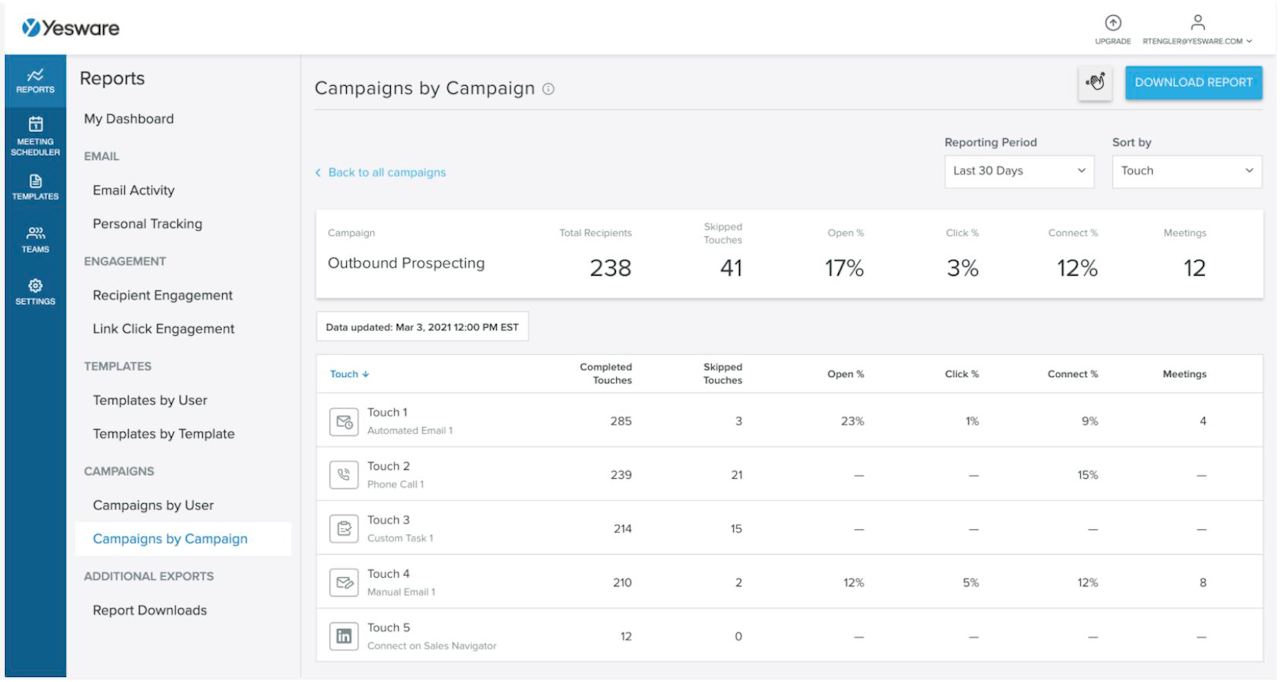
These reports help your team easily pinpoint exactly which sequences are working well, so you can drill down into what resonates most with your prospects.
Tips to Create a Winning Email Sequence
Writing effective email sequences takes practice. You will become more efficient in the practice as you gain more experience writing email content and analyzing results.
As you work to optimize the process, keep the following tips in mind. They will help you write effective email sequences regardless of your level of experience.
Consider Your Goals
How will the email sequence contribute to your sales goals? What purpose will they serve in the sales funnel?
Is this a one-time/evergreen campaign, or do you plan to adapt or update it over time?
Answering these questions effectively will help you optimize everything from the content to the timing of your email sequence.
Make It Personal
More than 70% of buyers now consider personalization a basic requirement in the sales process.
And although it requires sales reps to complete in-depth research on each of their prospects, adding personalization at every stage of the sales funnel is well worth the effort.
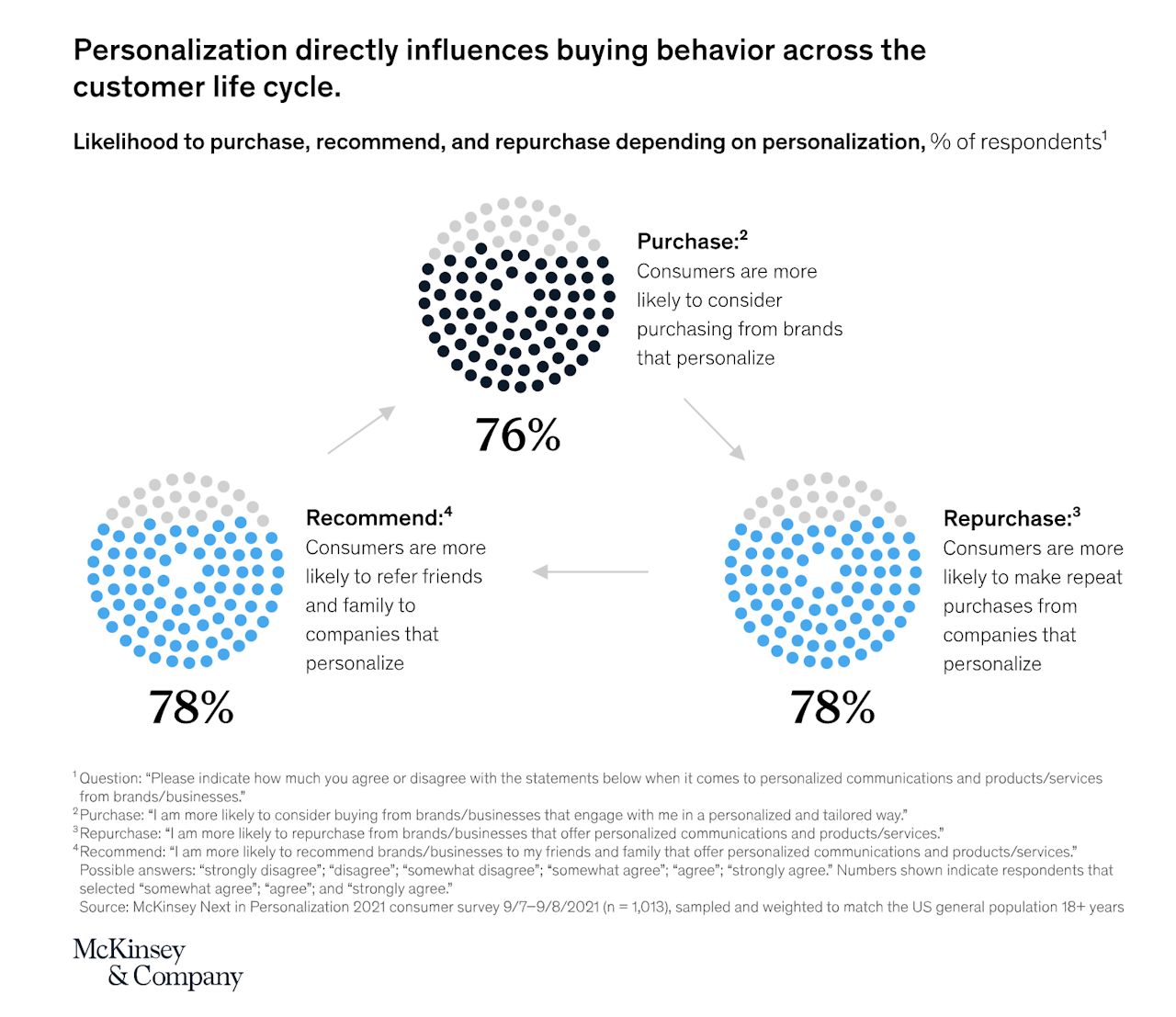
The good news is that teams of just about every size, experience level, and access to prospect data can level up their personalization by attending to just a few simple details.
At a minimum, your email sequences should include the prospect’s name. Even the most basic CRM systems and email service providers can handle simple first-name personalization in the greeting.
If you can, try to go one or two steps further. Some programs allow you to set rules that change the content of your email sequence based on the recipient’s gender, location, preferences, buying history, and other factors.
You can also add some personalization from your own perspective. Some sales reps find success in writing a quick personal update — and changing it frequently according to recent events.
Hi Sam,
Hope you’re doing well. The winter up here in Maine has been brutal — 80 inches of snow so far! I’m looking forward to the next time I can get down to your neck of the woods.
See how familiar and personal this quick introduction sounds? It can be a very effective strategy — as long as it’s authentic and timely. This Maine-based sales rep would need to be careful to update their email automation platform depending on changes in weather patterns, additional snowfall, etc.
Include a CTA
Depending on the specific goals of your email sequence, you’ll want to include a clear call-to-action (CTA) that helps guide the recipient to the intended next step.
The design of a CTA is just as important as the copy. In order for it to clearly direct the reader on what to do next, the CTA itself has to stand out.
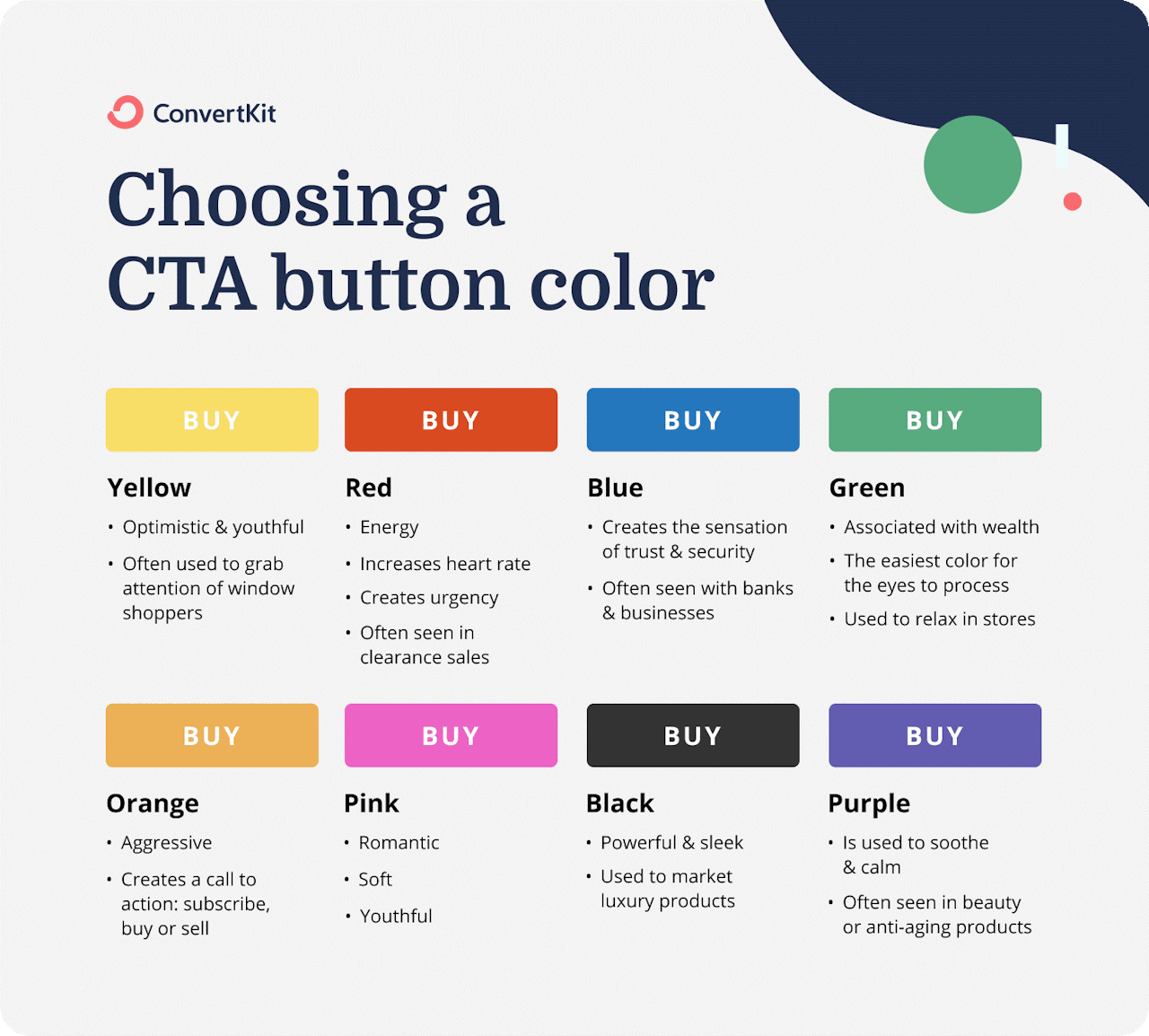
The CTA should be placed after at least some of the body of the email (some emails strategically use more than one CTA, and insert them throughout the copy). The reader needs context in order to take the next step.
Email Sequence Template
Because email sequences change depending on how the recipient interacts with them, it can be challenging to prescribe a certain template over another. Each one is unique, and sales teams shouldn’t feel boxed in by a template if it doesn’t fit the needs of the sequence and, more importantly, the buyer.
That being said, it can be helpful to start with a basic template to give your sequence some structure and direction. Following is an example of a welcome email sequence. It’s highly encouraged that you tweak, adapt, or completely change this sequences to best help you reach your specific goals.
Welcome Email Sequence
A welcome email sequence is great for cold or warm leads who have recently signed up for a webinar, downloaded a lead magnet (ebook, case study, etc.), or subscribed to your blog or newsletter.
It’s important to get this sequence right — welcome rates have an 86% higher open rate than other kinds of emails, and a 196% increase in click-through rate. In other words, there’s a very high chance that your prospect will see, read, and hopefully interact with the content inside those emails.
So you have to make it count.
Email 1: Thank your new subscriber | This one doesn’t need to be complicated, but it does need to be on-brand and confident.
Email 2: Acknowledge a few pain points | There’s a reason the prospect gave you their email — they think you might be able to help them. Show them that you can by showing them that you understand what they’re going through.
Email 3: Send resources | It’s one thing to understand a buyer’s pain; it’s another thing to help them fix it. Time to put your money where your mouth is. Share valuable content that will legitimately help the prospect — this will give you credibility and show the prospect that you are trustworthy.
Email 4: Share details | If your prospect has signed on for an upcoming event like a webinar, now’s the time to deliver the logistics. By now, your prospect has gotten so much value from your email sequence that they’re probably eager to hear from you again and will RSVP accordingly.
Email 5: Thank you | Send a quick and personal thank-you note after any events.
Does your team use email sequences? Which have you found to be most successful? How have you adapted your process over time to optimize your outreach?
This guide was updated on April 26, 2023.
Get sales tips and strategies delivered straight to your inbox.
Yesware will help you generate more sales right from your inbox. Try our Outlook add-on or Gmail Chrome extension for free, forever!
Related Articles
Jenny Keohane
Jenny Keohane
Melissa Williams
Sales, deal management, and communication tips for your inbox

